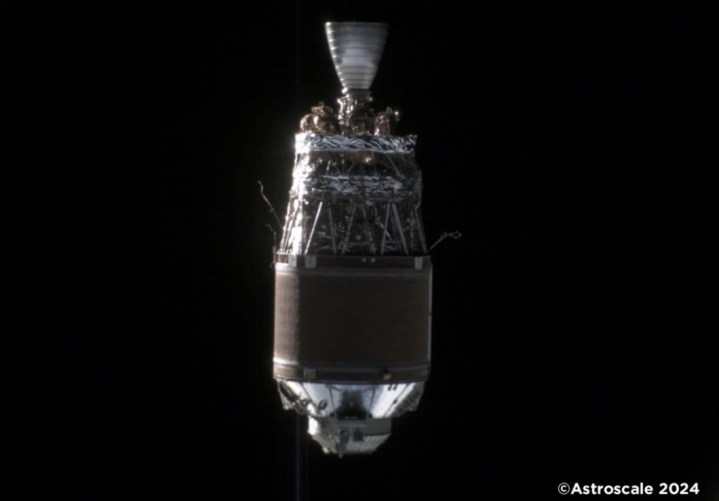
Orbital debris removal company Astroscale has shared a remarkable image captured by the Active Debris Removal by Astroscale-Japan (ADRAS-J) satellite.
Taken from a distance of just 50 meters, the image shows a large piece of space junk — a spent rocket’s upper stage about 11 meters in length that’s been in low-Earth orbit for 15 years after launching an Earth-observation satellite for Japan in 2009. Astroscale has described the controlled approach as a world’s first.
Japan’s space agency selected Tokyo-based Astroscale for its Commercial Removal of Debris Demonstration (CRD2) program, and ADRAS-J is a part of this initiative. Studying a piece of space junk up close allows Astroscale to fully understand its condition and movement prior to removing it. The gathered data will enable a future mission to make a safe approach, grab it with robotic arms, and carry it out of orbit, where it will burn up in Earth’s atmosphere.
Space debris in low-Earth orbit comprises not only old rocket parts, but also decommissioned satellites and fragments that have resulted from collisions between these parts. NASA says there are millions of pieces of space junk orbiting Earth at 18,000 mph, posing a hazard to functioning satellites providing vital services, as well as to human-crewed habitats such as the International Space Station and China’s space station.
International efforts have been underway for years to find ways of safely and efficiently removing the debris, which NASA says totals close to 6,000 tons.
Astroscale’s mission was the first attempt to safely approach, characterize, and survey the state of a large piece of space junk in order to assess its movement and condition. Efforts to maneuver the ADRAS-J spacecraft toward the junk started in February using GPS and ground-based observation data. By April 9, ADRAS-J had used its onboard camera to successfully detect the junk, paving the way for the approach phase of the observation mission.
As ADRAS-J came within a few miles of the debris, the team deployed an onboard infrared camera that used navigation algorithms for a safe final approach. In May, ADRAS-J came within about 50 meters of the junk, to a point from which it was able to capture detailed imagery, including the photo at the top of this page. ADRAS-J will now attempt to move even closer to the debris to capture more detailed images.
“The images and data collected are expected to be crucial in better understanding the debris and providing critical information for future removal efforts,” Astroscale said.
Editors’ Recommendations
Services Marketplace – Listings, Bookings & Reviews
